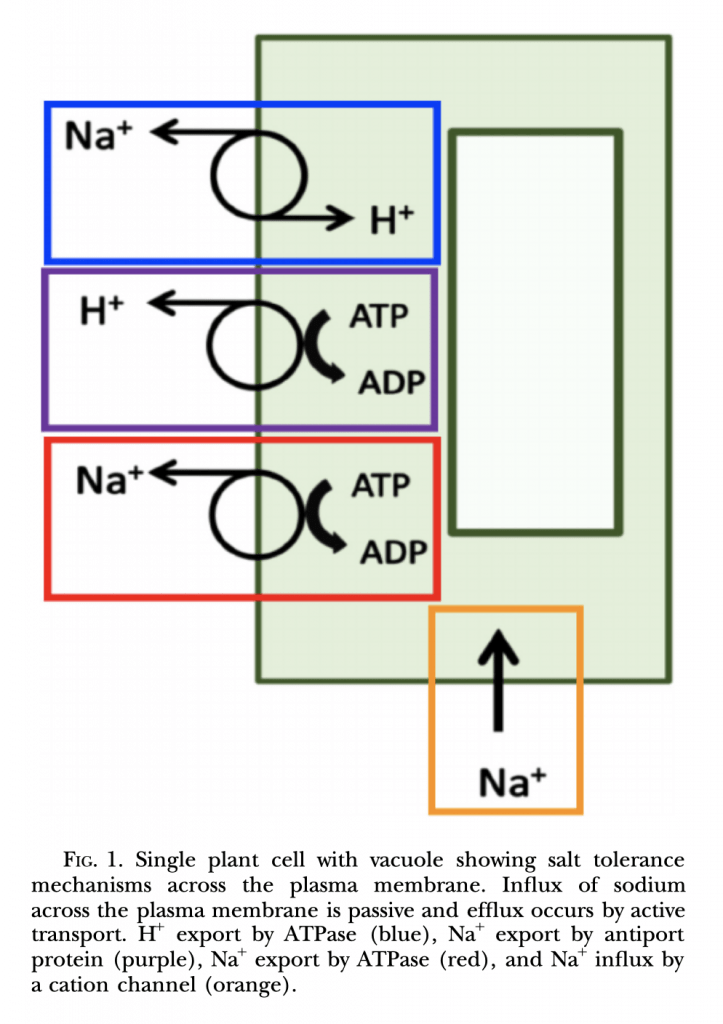In collaboration with Mary Bisson and Shaun Phipps at the University at Buffalo, Graduate student Charles A. Goodman and I used RNAseq (i.e., quantitative Illumina sequencing) to examine the role of ion-channel transporters in the salt tolerance of Chara longifolia. It is nearly certain that the ancestral condition for Chara, and for all other Streptophyte algae, is the freshwater environment, and most have very low tolerance for salt. In fact, there is reason to think that primary plastids originated in the freshwater environment, and that there were multiple, independent colonizations of the marine environment by both red and green algae. There also seem to have been multiple independent colonizations of high-salt terrestrial environments, one of which was by Chara longifolia. To examine the mechanism for adaptation of C. longifolia to saline environments, Shaunna exposed C. longifolia and a related species that is not salt tolerant, Chara australis, to stress-inducing levels of salt and used RNAseq to examine changes in gene expression as a function of salt stress. Charlie did yeoman’s work processing the libraries through his informatics pipeline and helping get the data into a form that could be interpreted. We identified changes in genes that encode ion transporters, including HKT, ENA, NHX, and AHA. ENA, a Na+-ATPase is of particular interest because it is only present in the salt tolerant species, and seems likely to play a key role in active transport of Sodium during times of salt stress.
https://doi.org/10.1111/jpy.13160
https://doi.org/10.1111/jpy.13166
